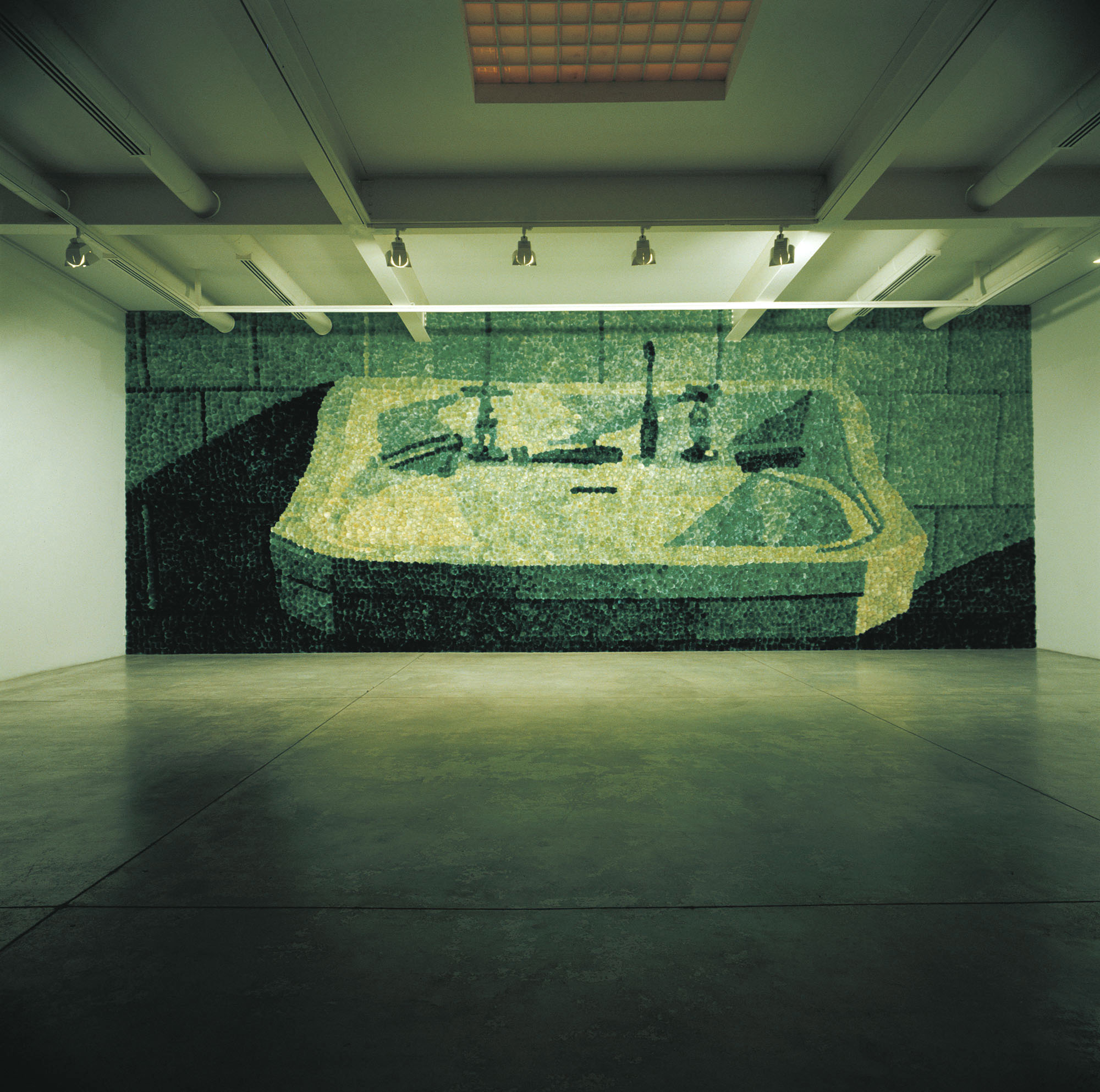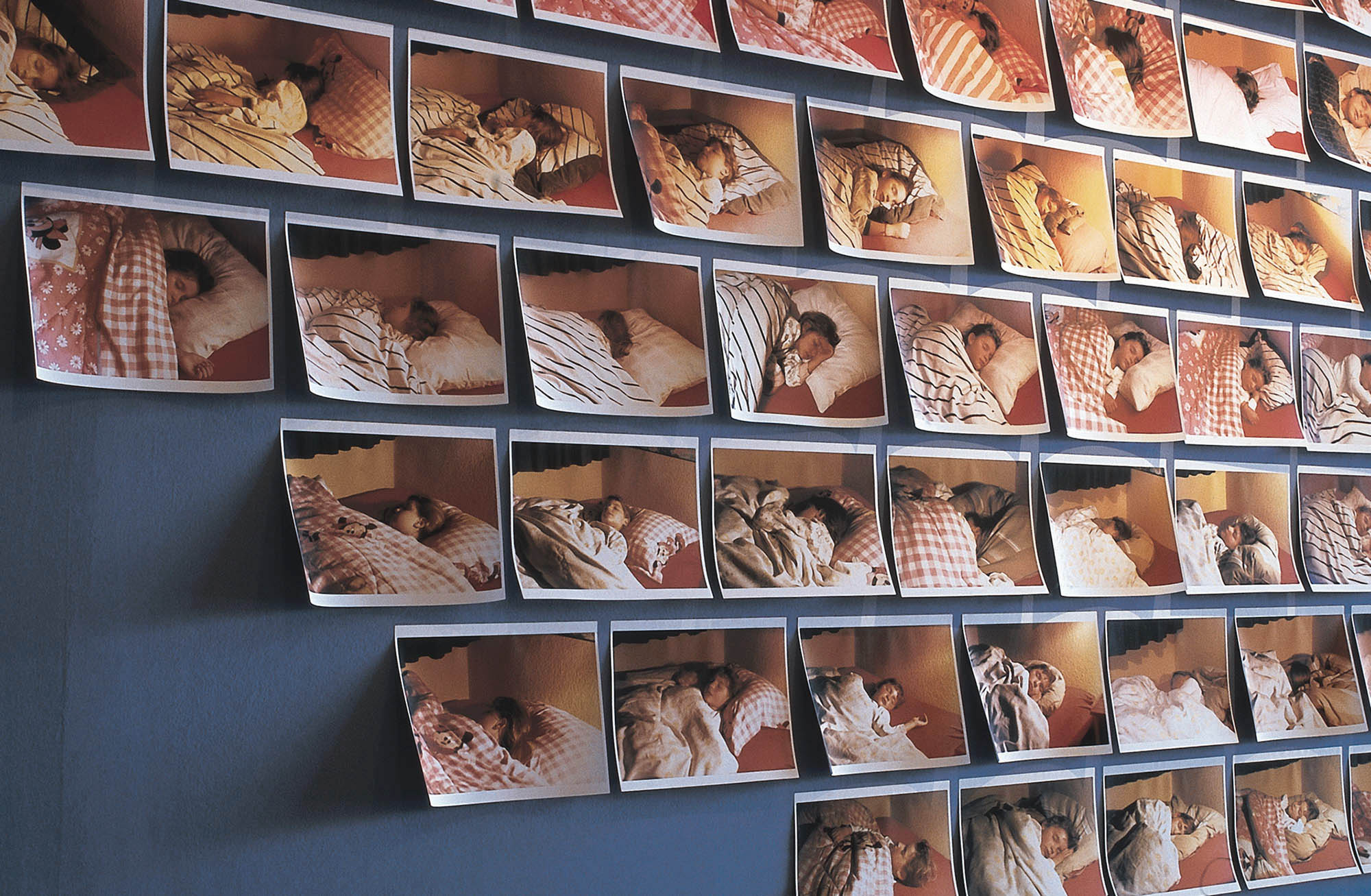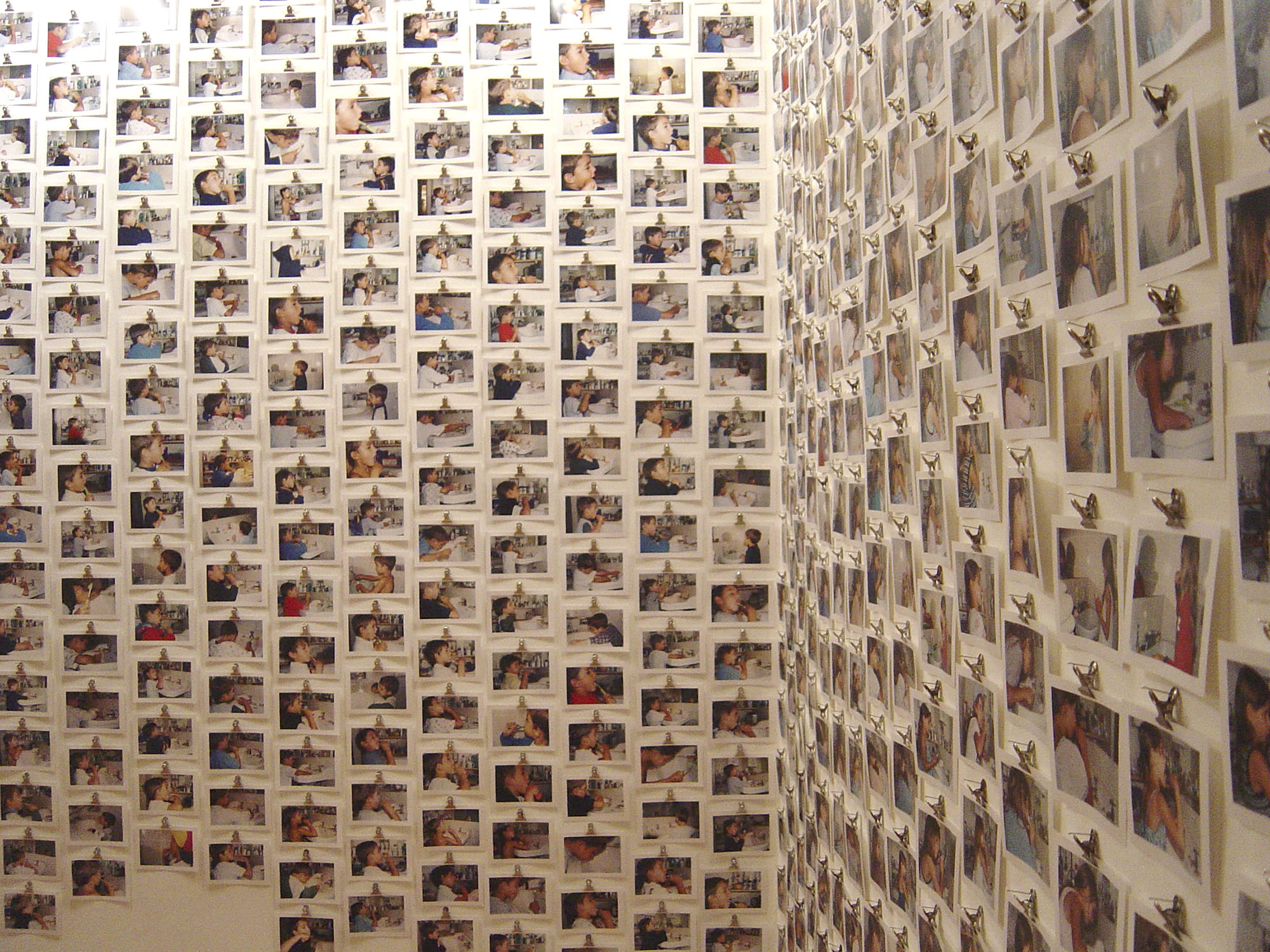
“Con respecto de las fotografías de mis hijos,
creo que ellos siempre han sido una extensión de mi propia piel”
Mónica Bengoa
La cita de otra superficie de Bengoa –la textual–, en la cual daba cuenta del proceso de su obra –el cuerpo– en su reiteración con diferentes resignificaciones vuelven a aparecer en Sobrevigilancia. Parte del registro y de la acumulación de tomas cotidianas de sus hijos que ahora están utilizadas en su condición metonímica (la parte y el todo) inicialmente en los dos cepillos en el vaso sobre el lavamanos.
De ahí que Sobrevigilancia aluda a una superficie visible y otra invisible; la primera es la adscripción genérica de esta obra a su condición pictórica que condensa como hipercodificación del cuerpo de obra de Bengoa en cuanto el propio: la piel, la huella de las acciones incidentales, pero ahora desplazada en la otra piel, la de la superficie del muro en la Galería, que recubre con cardos teñidos que manualmente componen la imagen del encuadre de una sala de baño: azulejos, un lavamanos y un vaso con dos cepillos, es decir, capa sobre capa. El azulejo también es un material para recubrir el muro, en especial aquellos con escurrimiento de humedad. Qué es la pintura sino el acto de recubrir en la acción primera de la imprimación para la retención.
Lo segundo, a propósito de retención, es por los elementos que mantiene Bengoa dándole continuidad a Sobrevigilancia en su –carácter metonímico– la huella de la secuencia de otras obras en las que aparecen sus hijos: En vigilia, Valdivia 1999; Tríptico en Santiago, 2000; y En vigilia IV, Buenos Aires 2001. En este recorrido de territorios la referencia fotográfica se construye sobre la serie de tomas y su demarcación según el lugar. Ahora me parece que reinvierte el proceso, la fotografía está como cita en su condición casi amateur, desenfocada o sobrexpuesta. Aparentemente Sobrevigilancia parece una fotografía satelital, esta asociación no es casual, le geografía física es una constante en la obra de Bengoa.
De algún modo Sobrevigilancia es una operación a escala que realiza Bengoa en la que condensa los procedimientos constructivos del cuerpo de su obra, reiterando la noción extensiva del territorio para la problematización del paisaje a partir de la cartografía y cartas climáticas, las cuales son analogizables en la pintura respecto de la representación del color. pero ahora la acumulación de los residuos y sus demarcaciones se desplazan hacia la geografía íntima de la fragilidad de lo privado y lo público.

Alberto Madrid Letelier
Doctor en Filología Hispánica, Magíster en Letras, Curador, Académico e Investigador
En catálogo Galería Animal Exposiciones 2000 / 2001. p.124-127. Santiago, Chile. 2001

Residues
“In relation to the photographs of my children,
I believe they have always been an extension of my own skin”
Mónica Bengoa
The quotation of another surface of Bengoa –the textual one– in which she gave account of her work process –the body– in her reiterations with different resignifications that reappear in Sobrevigilancia (“Overvigilance”). Part of the register and the accumulations of everyday takes of her children that are now used in their metonymic condition (the part and the whole) indicatingly in the two toothbrushes in the glass on the bathroom sink.
Hence Sobrevigilancia alludes to a visible and another invisible surface; the first one is the generic addscription of this work to its pictorial condition that condenses as hypercodeification of the body of Bengoa as far as the own: the skin, the trace of the incidental actions, but now displaced in the other skin, the one of the surface of the wall of the gallery, that she covers with dyed thistles that manually compose the image of the framing of a bathroom: tiles, a sink and a glass with two toothbrushes, this is, layer over layer. The tile is also a material to cover the wall, specially those with dripping of humidity. What is painting if not the act of recovering the first action of the imprinting for retention.
The second one, speaking of retention, is because of the elements that Bengoa maintains giving Sobrevigilancia continuity in its –metonymic character– the trace of the sequence of other works in which her children appear: En vigilia (Vigil) Valdivia 1999; Tríptico en Santiago (Tryptich in Santiago), 2000; and En vigilia IV (Vigil IV), Buenos Aires 2001. In this journey of territories the photographic reference builds itself on the series of takes and their marking according to the place. Now it seems to me that she reinverts the process, the photograph is there as quote in its almost amateur condition, blurry or overexposed. Apparently Sobrevigilancia looks like a satelital photograph, this association is not casual, physic geography is a constant in the work of Bengoa.
In some way Sobrevigilancia is a scale operation that Bengoa conducts in which she condenses the constructive of her body of work, reiterating the extensive notion of territory for the problematization of the landscape starting from cartography and climatic cards which are analogized in painting in respect of the representation of colour. But the accumulation of the residues and their delimitations is now displaced towards the intimate geography of the fragility of what is private and what is public.
Alberto Madrid Letelier
In exhibition catalog. Galería Animal Exhibitions 2000 / 2001. p.124-127. Santiago, Chile. 2001

